This easy recipe for butterscotch sauce is ready in minutes with 5 basic ingredients you likely already have in your kitchen! With delicious molasses notes from dark brown sugar, richness from butter, and a velvety consistency thanks to heavy cream, this sweet sauce is addictive.
Butterscotch is often confused with caramel. While they are in the same family, they do have very different flavors and are made with different ingredients. On top of that, this recipe is a bit easier to make, takes about half the time to cook, and there’s no somewhat finicky step of waiting for sugar to caramelize, resulting in a buttery, sweet, creamy sauce in about 5 minutes. For more butterscotch-flavored recipes, try my Butterscotch Pie recipe, Scotercheroos recipe, and easy Magic Cookie Bars.
What You Need to Make this Recipe
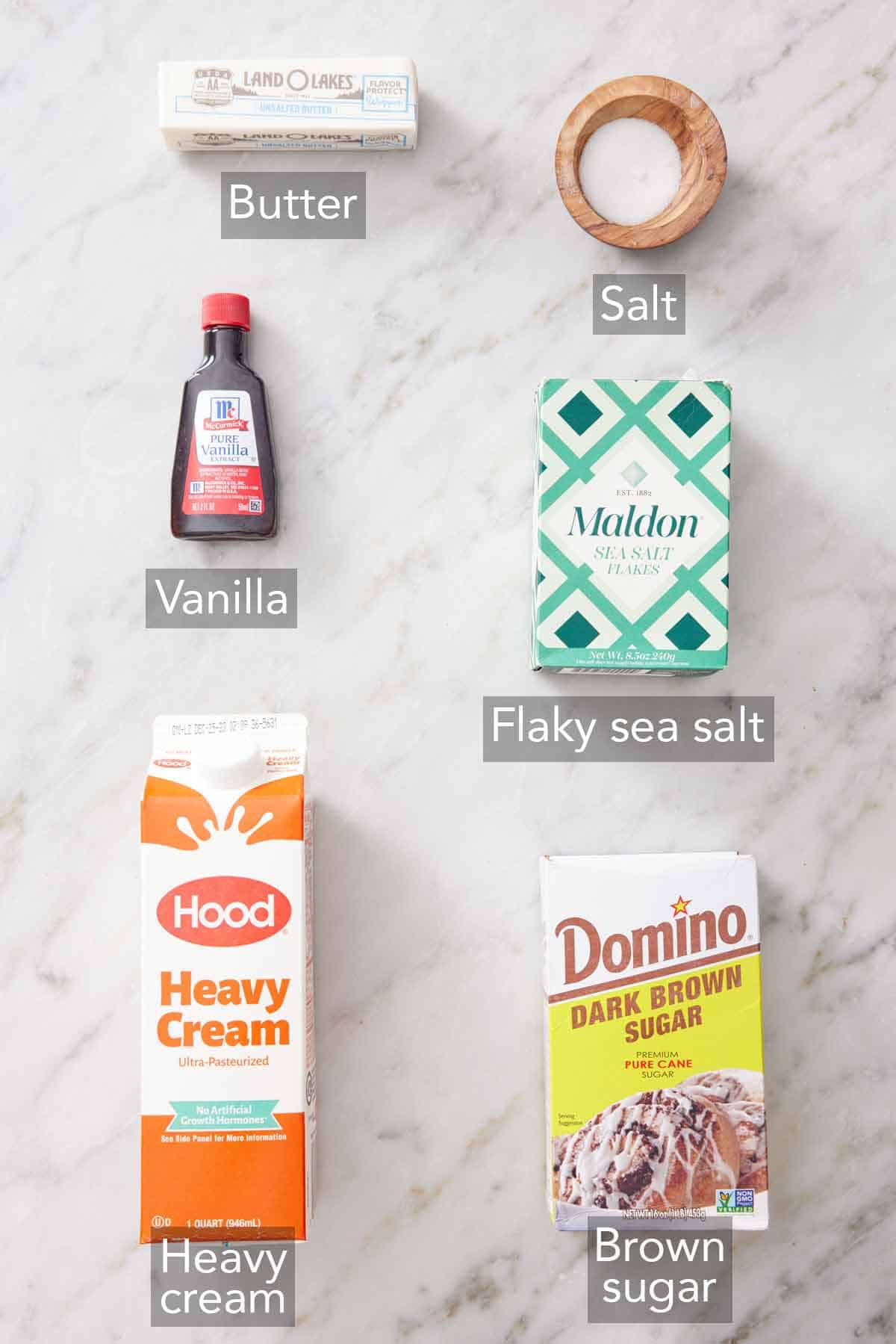
Butter — opt for unsalted butter so you can control exactly how much salt goes into the sauce.
Brown sugar — light brown sugar and dark brown sugar both work. I prefer dark brown sugar for a more intense molasses flavor and darker color.
Salt — kosher salt balances out and enhances the sweetness of the sauce.
Heavy cream — heavy cream gives the dessert sauce its velvety consistency. Do not substitute it for half and half or whole milk.
Vanilla extract — use a high-quality vanilla extract and avoid vanilla essence.
Flaky sea salt (optional) — sprinkle a little flaky sea salt over the sauce before serving for an extra boost of flavor and to balance the sweetness.
How to Make Butterscotch
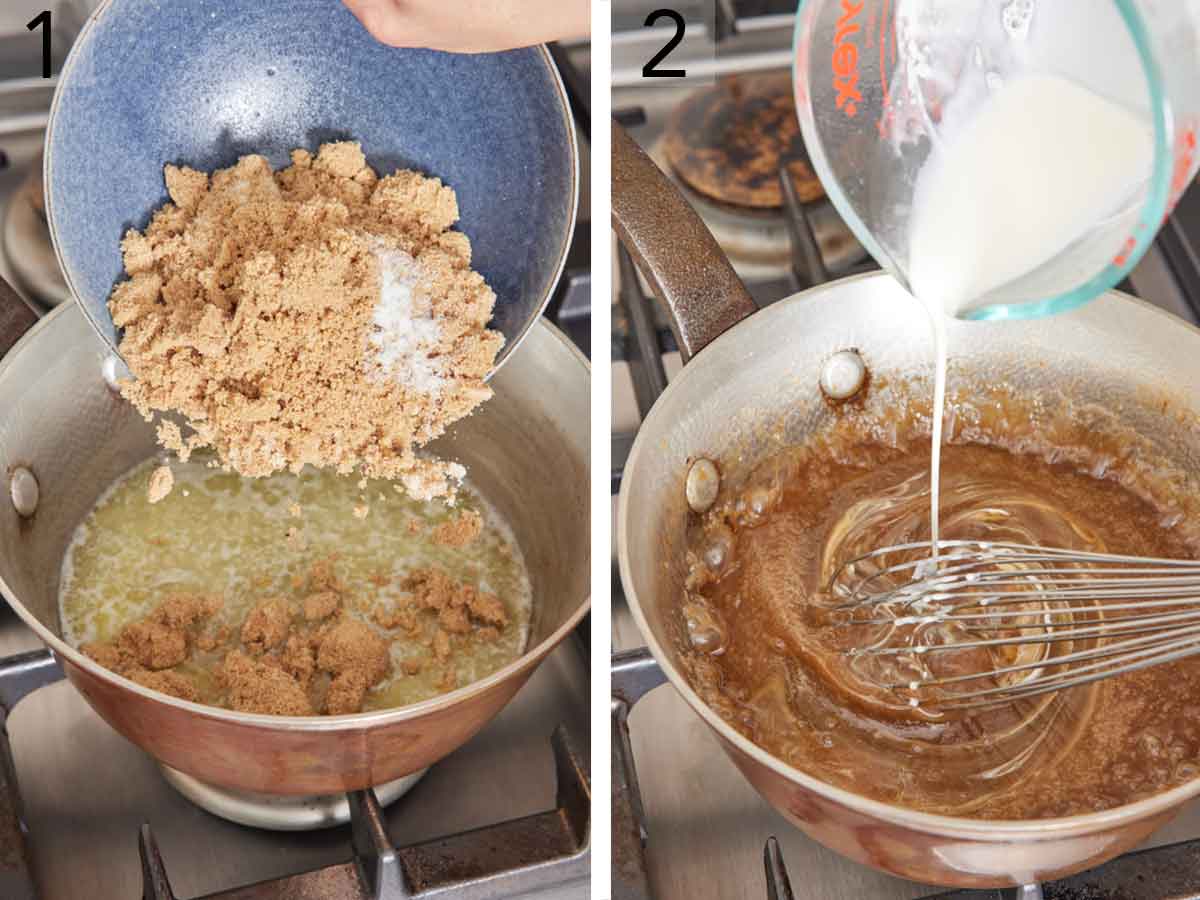
1. In a heavy-bottomed medium saucepan with tall sides, melt the unsalted butter over medium heat. Stir in the dark brown sugar and kosher salt. Bring to a boil and stir occasionally for about 3 minutes. The mixture should start off looking grainy and then transform into a thick batter-like consistency as the sugar dissolves.
2. Carefully whisk in the cream. If the sugar clumps a bit at first, just keep stirring until the mixture is smooth again. Reduce the heat to medium-low. If you have a candy thermometer, you can add it to the pot at this point.
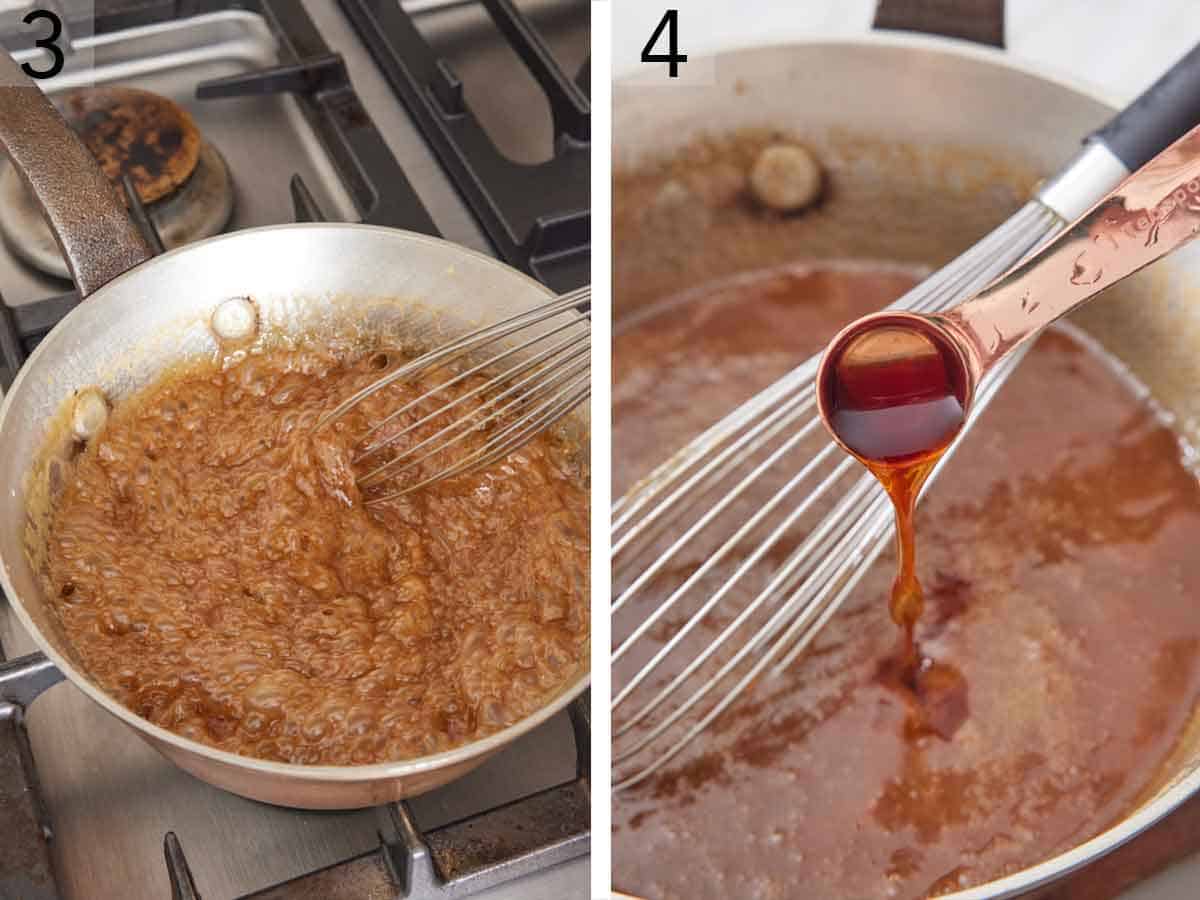
3. Boil the sauce and stir frequently until the temperature reaches 220°F for a thinner sauce or 225°F for a thicker sauce. If you don’t have a candy thermometer, this will take 1 to 3 minutes, and the sauce should fall off a spoon in a sheet.
4. Remove the sauce from the heat and stir in the vanilla extract. After it has cooled for 10 minutes, transfer the sauce to an airtight container and allow it to cool completely. It will thicken as it cools.
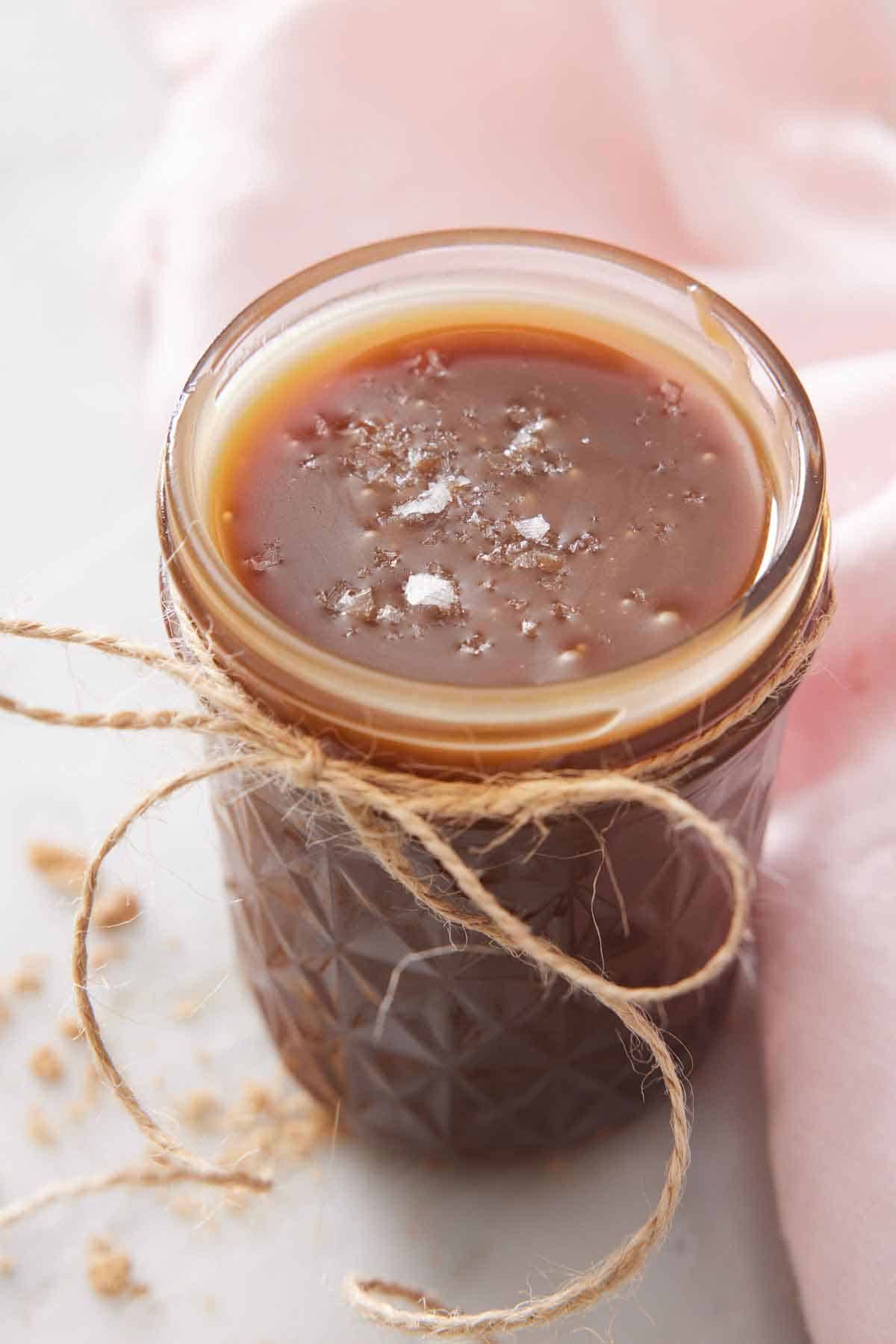
Pro Tips for Making this Recipe
- Use a heavy-bottomed pan. This will ensure heat is distributed evenly so the sauce cooks evenly. A pot with a thin bottom can burn the sugar easily, especially in the first stage of cooking.
- You can use light brown sugar. This will yield a lighter-flavored and lighter-colored sauce.
- Skip the corn syrup. Some recipes call for corn syrup, but I don’t think it is a necessary ingredient for a silky sauce.
- Use room temperature heavy cream. If the heavy cream is too cold, it could curdle due to the fast and extreme temperature change of pouring cold cream into very hot sugar. Warmer or room temperature cream will result in a silky smooth sauce.
- Don’t overcook it. You will end up with a sauce that tastes bitter and burnt.
- Consistency tips: A thinner sauce is perfect for using cold or drizzling over cold desserts like ice cream. Cook the sauce for a little longer to make a thicker sauce to pour onto warm or room temperature desserts like cakes or brownies.
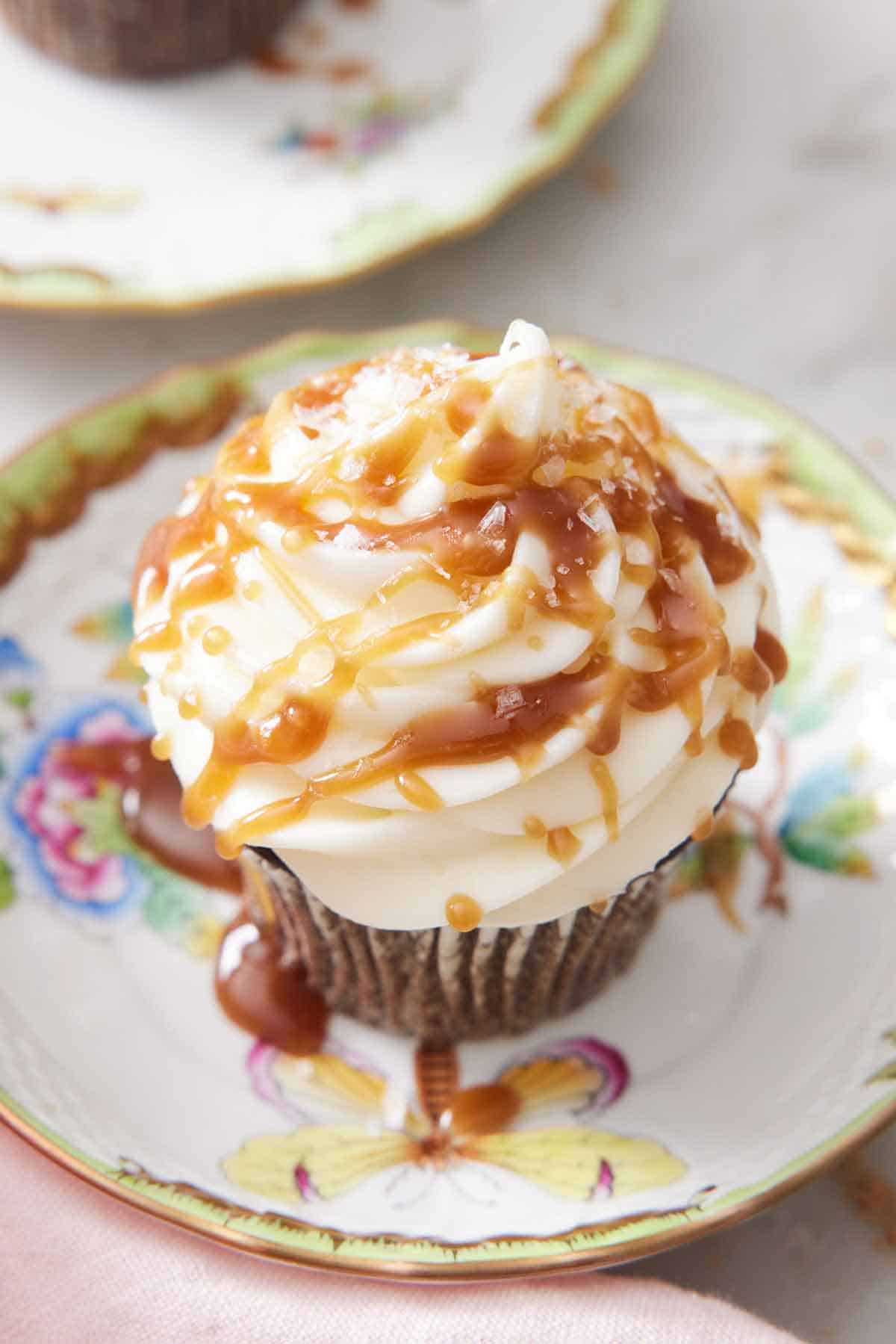
Frequently Asked Questions
Contrary to its name, there is no alcohol at all in this recipe! The “scotch” part of the name is possibly attributed to the definition “cut” or “score” since butterscotch hard candy needs to be cut into pieces before it hardens.
No. The key difference between caramel and butterscotch is that caramel sauce is made with granulated sugar (also called white sugar) and this sauce is made with brown sugar. Butterscotch sauce uses dark brown sugar and lots of butter for an extra buttery flavor, while caramel cooks granulated sugar until it starts to brown and adds a bit of butter for richness, but much less than butterscotch, and contains no molasses. If you love the taste of butterscotch chips in baked goods, then you’ll love this sauce!
Homemade butterscotch sauce is wonderfully versatile! If you manage to not eat it by the spoonful, you’ll want to drizzle it over everything, from chocolate brownies to pancakes to apple cobbler. To take plain ol’ vanilla ice cream up a few notches, add a generous drizzle of the sauce on top. It’s a great addition to banana splits or ice cream sundaes, too! The sauce also adds a delicious butterscotch flavor to fruit pies — seriously, try it on mini apple pies. You will be hooked! Or pour it over a slice of pound cake or my classic cheesecake recipe for pure decadence.
Store it in an airtight container in the refrigerator for up to 2 weeks. It will thicken quite a bit as it cools. Reheat it on low heat before serving. Don’t bring it to a boil; reheat it slowly and gently.
If you’ve tried this butterscotch recipe, then don’t forget to rate the recipe and let me know how you got on in the comments below, I love hearing from you!
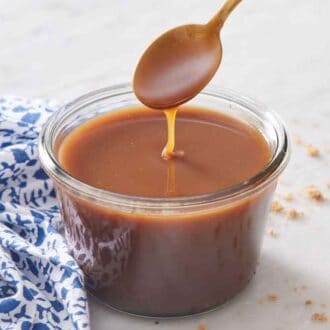
Butterscotch
Equipment
- Medium pot
- Candy thermometer (optional)
Ingredients
- ¼ cup unsalted butter (56g)
- 1 cup packed dark brown sugar (220g)
- ½ teaspoon kosher salt
- ¾ cup heavy cream room temperature (180ml)
- 1 teaspoon vanilla extract
- Flaky sea salt for serving (optional)
Instructions
- Melt the butter in a medium saucepan with tall sides over medium heat. Stir in the brown sugar and kosher salt. Bring to a boil, stirring occasionally, about 3 minutes. (The mixture will go from looking like wet sand to thick brownie batter when stirred.)
- Once boiling, carefully whisk in the cream. The sugar may clump a bit at first, but keep stirring until it is smooth again. Reduce the heat to medium-low and add a candy thermometer to the pot if you have one.
- Boil, stirring frequently (make sure you get the sides and corners of the pan), until it reaches 220°F for a thinner sauce or 225°F for a thicker sauce or until it falls off a spoon in a sheet, 1 to 3 minutes.
- Remove from the heat and stir in the vanilla. Let the sauce cool for 10 minutes, then transfer it to an air-tight container and let it cool completely. The sauce will thicken as it cools. Sprinkle with flake salt when serving, if desired. Store the sauce in the refrigerator for up to 2 weeks. Reheat it before serving.
Notes
- Use a heavy-bottomed pan. This will ensure heat is distributed evenly so the sauce cooks evenly. A pot with a thin bottom can burn the sugar easily, especially in the first stage of cooking.
- You can use light brown sugar. This will yield a lighter-flavored and lighter-colored sauce.
- Skip the corn syrup. Some recipes call for corn syrup, but I don’t think it is a necessary ingredient for a silky sauce.
- Use room temperature heavy cream. If the heavy cream is too cold, it could curdle due to the fast and extreme temperature change of pouring cold cream into very hot sugar. Warmer or room temperature cream will result in a silky smooth sauce.
- Don’t overcook it. You will end up with a sauce that tastes bitter and burnt.
- Consistency tips: A thinner sauce is perfect for using cold or drizzling over cold desserts like ice cream. Cook the sauce for a little longer to make a thicker sauce to pour onto warm or room temperature desserts like cakes or brownies.



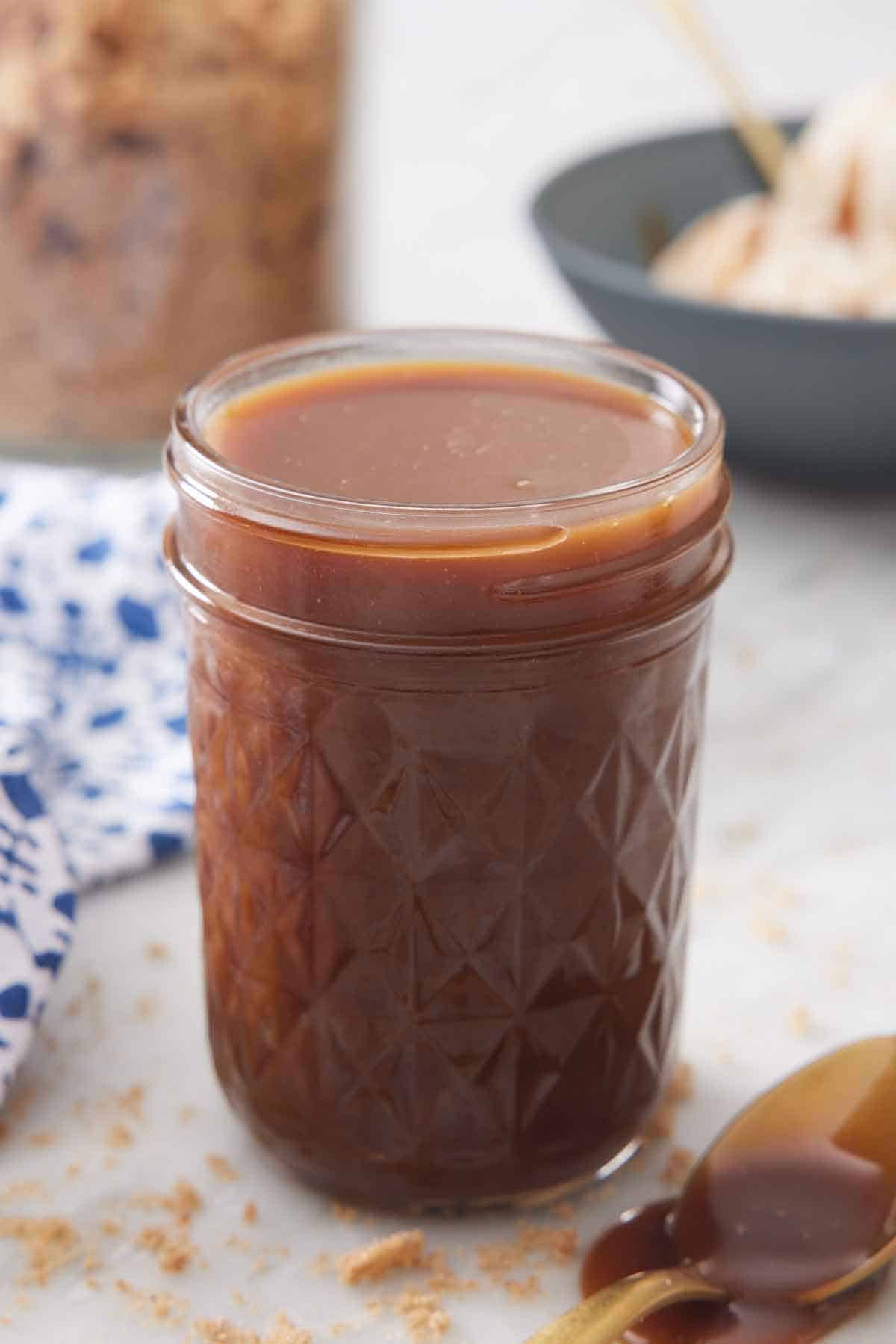
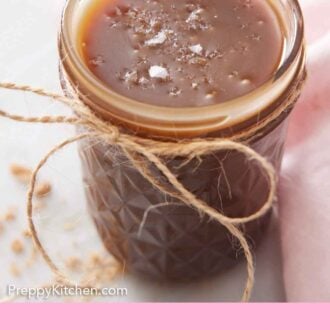
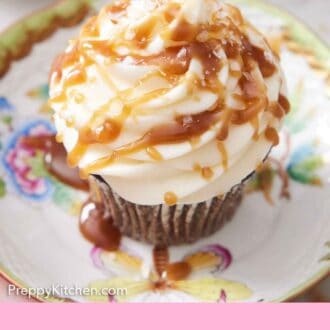
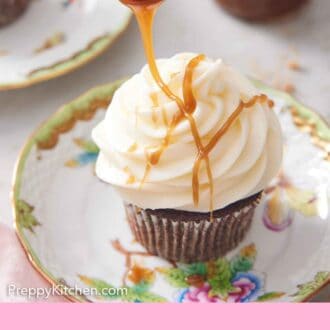
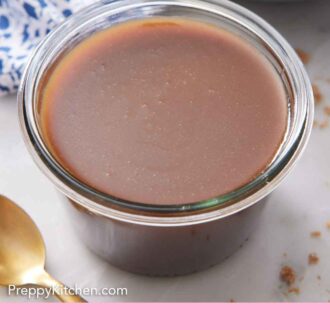
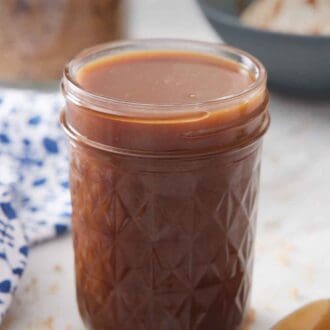
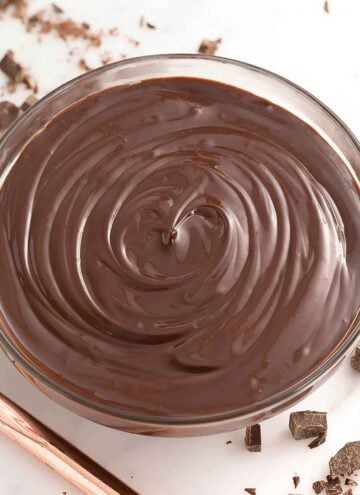
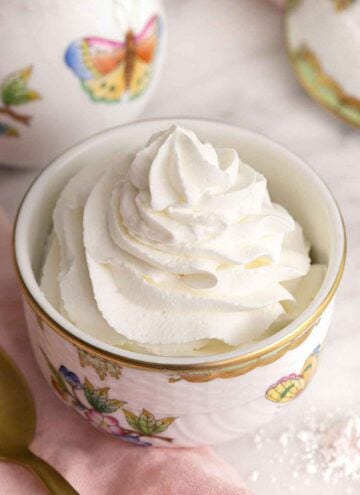
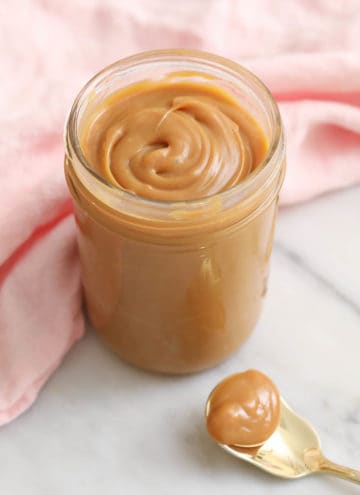
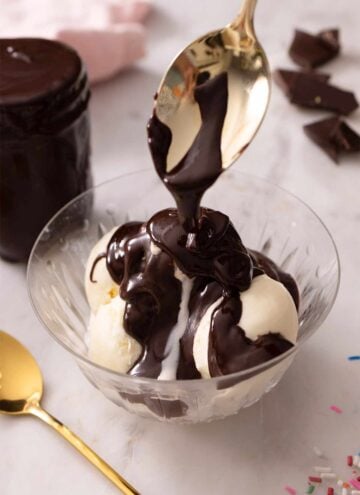
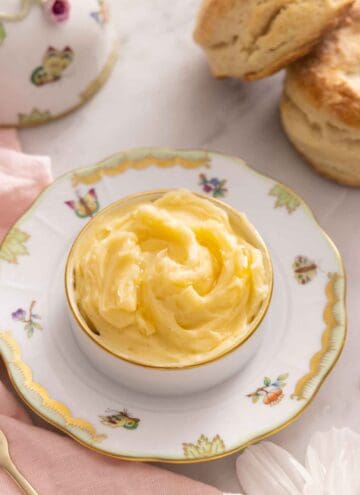
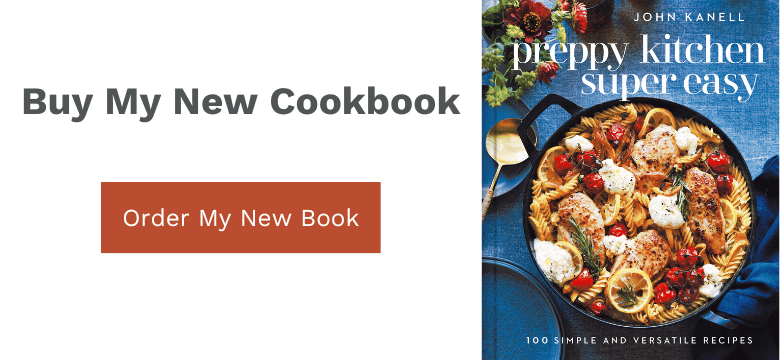
Leave a Reply